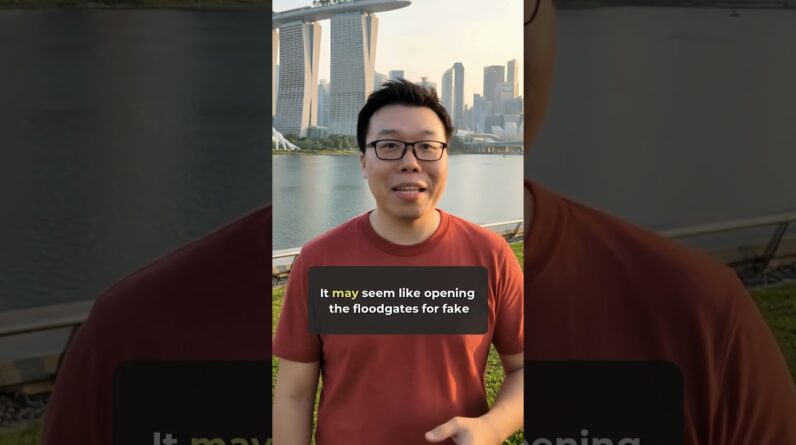
Have you ever wondered about the performance of your website’s SEO? Tracking your site’s SEO performance is essential for analyzing its visibility and ranking on search engines. In this article, we will guide you through the process of effectively monitoring and evaluating your site’s SEO performance. By implementing some simple strategies and utilizing helpful tools, you can gain valuable insights into how well your website is performing and make necessary improvements to boost its search engine rankings. So, let’s get started and unlock the secrets to tracking your site’s SEO performance!
Understanding SEO Performance
What is SEO performance?
SEO performance refers to the measurement and evaluation of how well your website performs in search engine results pages (SERPs) and the impact of your search engine optimization efforts on your website’s visibility and organic traffic. It involves analyzing various factors, such as keyword rankings, website traffic, backlinks, on-page optimization, and conversion rates.
Why is tracking SEO performance important?
Tracking SEO performance is crucial because it helps you understand the effectiveness of your SEO strategies and identify areas for improvement. By monitoring your website’s performance, you can determine which tactics are working and which ones need adjustment. Additionally, tracking SEO performance enables you to measure your success over time and make data-driven decisions to enhance your website’s visibility and organic traffic.
Key metrics to measure SEO performance
To accurately assess your SEO performance, there are several key metrics you should consider:
- Keyword rankings: Monitor how your target keywords rank in search engine results to evaluate your website’s visibility.
- Website traffic: Analyze the amount and source of traffic coming to your site, including organic and paid traffic.
- Conversion rates: Measure the percentage of website visitors who complete a desired action, such as making a purchase or filling out a form.
- Backlink profile: Evaluate the quantity and quality of websites linking back to your site, as backlinks play a crucial role in search engine rankings.
- Click-through rates (CTR): Track the percentage of users who click on your website’s link in search results to assess the effectiveness of your meta tags and snippets.
- Site speed: Monitor the loading speed of your website, as it directly impacts user experience and search engine rankings.
Setting Up Tracking Tools
Identify the right SEO tracking tools
To effectively track your SEO performance, it is essential to choose the right tools. Consider using a combination of the following tools to gather comprehensive data:
- Google Analytics: A free tool that provides detailed insights into website traffic, user behavior, and conversion rates.
- Google Search Console: Also free, it offers valuable data on your site’s performance in Google’s search results and helps identify and fix technical issues.
- Other SEO tracking tools: There are various paid tools available, such as Moz, SEMrush, and Ahrefs, that offer advanced features like keyword research, backlink analysis, and competitor research.
Google Analytics
Google Analytics is an indispensable tool for tracking SEO performance. After setting up an account and adding the tracking code to your website, you’ll be able to access comprehensive data about your site’s visitors, including their location, demographics, and behavior. Additionally, Google Analytics provides information about the sources of your website traffic, conversion rates, and many other key metrics. Regularly analyzing your Google Analytics data will help you track the effectiveness of your SEO efforts and make informed decisions to improve your website’s performance.
Google Search Console
Google Search Console complements Google Analytics by providing SEO-specific data and insights. By linking your website to Google Search Console, you can monitor your site’s indexing status, identify and fix crawl errors, and view the keywords that drive organic traffic to your site. Moreover, Google Search Console allows you to submit your sitemap, monitor your site’s backlinks, and receive important notifications from Google regarding any issues affecting your website’s visibility in search results. Utilizing Google Search Console alongside Google Analytics ensures comprehensive tracking of your SEO performance.
Other SEO tracking tools
While Google Analytics and Google Search Console are excellent tools, you may also consider using other SEO tracking tools to gather additional insights. Tools like Moz, SEMrush, and Ahrefs offer features such as comprehensive keyword research, competitor analysis, backlink monitoring, and rank tracking. These tools provide valuable data to evaluate your SEO performance, uncover new opportunities, and stay ahead of competitors. Assess your specific needs and budget to determine which additional SEO tracking tools would enhance your performance tracking efforts.
Performing Keyword Analysis
Importance of keyword analysis
Keyword analysis is crucial for optimizing your website’s visibility in search engine results. By conducting keyword analysis, you can identify the terms and phrases that potential visitors use to search for content related to your website. This knowledge allows you to optimize your website’s content, meta tags, and other elements to target relevant keywords effectively. By targeting the right keywords, you increase the chances of attracting organic traffic to your site.
Identifying relevant keywords
To identify relevant keywords, start by brainstorming a list of terms and phrases related to your website’s content. You can then use keyword research tools like Google Keyword Planner, SEMrush’s Keyword Magic Tool, or Moz Keyword Explorer to expand your list and gather valuable insights. These tools provide data on search volume, competition, and related keywords, helping you assess the relevancy and potential performance of each keyword.
Competitor analysis
Conducting competitor analysis is an essential aspect of keyword analysis. By analyzing the keywords your competitors are targeting, you can gain valuable insights into their SEO strategies and identify potential opportunities for your website. Use tools like SEMrush or Ahrefs to analyze your competitors’ organic search rankings, backlinks, and top-performing keywords. Understand their strengths and weaknesses, and leverage this knowledge to refine your keyword targeting and improve your SEO performance.
Keyword research tools
There are various keyword research tools available to assist you in identifying the most relevant keywords for your website. Some popular options include:
- Google Keyword Planner: This free tool from Google offers keyword ideas, search volume data, and insights into trends.
- SEMrush: A comprehensive SEO tool that provides detailed keyword research, competitor analysis, and search volume data.
- Moz Keyword Explorer: Offers keyword suggestions, search volume estimates, and advanced metrics like keyword difficulty and organic click-through rate (CTR).
- Ahrefs: Known for its expansive backlink analysis capabilities, Ahrefs also provides comprehensive keyword research features, including competitor analysis and keyword difficulty scoring.
These tools can significantly aid your keyword analysis, enabling you to select the most effective keywords for your SEO efforts.
Monitoring Website Traffic
Importance of monitoring traffic
Monitoring website traffic is vital because it allows you to understand how users interact with your site and identify patterns or trends. By tracking website traffic, you can gain insights into the effectiveness of your SEO strategies and optimize your site to enhance user experience and drive more conversions. Additionally, monitoring traffic helps you identify any sudden drops or increases in traffic, enabling you to quickly diagnose and address any issues that may be impacting your site’s performance.
Using Google Analytics to track traffic
Google Analytics provides detailed data on website traffic, making it an invaluable tool for monitoring the effectiveness of your SEO efforts. To track traffic in Google Analytics, navigate to the “Acquisition” section and select “All Traffic.” Here, you can gain insights into the different sources of your website traffic, including organic, paid, social, and direct traffic. By analyzing these traffic sources, you can determine which channels are driving the most qualified visitors to your site and focus your efforts accordingly.
Analyzing organic vs. paid traffic
Differentiating between organic and paid traffic is crucial in understanding the impact of your SEO efforts. In Google Analytics, you can analyze these two traffic sources separately. Organic traffic refers to visitors who arrive at your site through unpaid search engine results. Paid traffic, on the other hand, comes from visitors who clicked on your ads in search engine results or other advertising platforms. By comparing the performance of organic and paid traffic, you can evaluate the effectiveness of your SEO strategies and paid advertising campaigns.
Identifying traffic sources
Google Analytics provides detailed information on the sources of your website traffic. The main traffic sources include:
- Organic Search: Visitors who arrive at your site by clicking on a search engine result.
- Direct: Visitors who type your website’s URL directly into their browsers or have your site bookmarked.
- Referral: Visitors who arrive at your site by clicking on a link from another website.
- Social: Visitors who come to your site through social media platforms like Facebook, Twitter, or Instagram.
- Paid Search: Visitors who click on your ads in search engine results or paid advertising campaigns.
Analyzing these traffic sources helps you understand where your visitors are coming from and focus your efforts on channels that are driving the most quality traffic to your site.
Tracking Keyword Rankings
Importance of tracking keyword rankings
Monitoring keyword rankings is essential for understanding the impact of your SEO efforts and ensuring your website’s visibility in search engine results. By tracking your keyword rankings, you can assess your website’s performance, identify opportunities for improvement, and optimize your content based on user search behavior. Additionally, tracking keyword rankings allows you to stay informed about any fluctuations or changes in search engine algorithms that may affect your rankings.
Using SEO tools for keyword ranking
Several SEO tools, such as SEMrush, Moz, and Ahrefs, offer keyword rank tracking features. These tools allow you to input your target keywords and track their rankings over time. They also provide valuable insights into search volume, keyword difficulty, and competitor rankings. By using these tools, you can monitor your keyword rankings, identify trends, and make data-driven decisions to improve your website’s visibility in search results.
Monitor changes in rankings
Regularly monitoring changes in your keyword rankings can help you identify any positive or negative shifts in your website’s visibility. Track your rankings over time using the SEO tools mentioned above and analyze any fluctuations. If you notice a decline in rankings, it may indicate the need for adjustments to your SEO strategies or content optimization. Likewise, if you observe an improvement in rankings, you can examine what tactics have contributed to the positive change and replicate them for other keywords or pages.
Analyze rankings against competitors
Comparing your keyword rankings against those of your competitors can provide valuable insights into the effectiveness of your SEO strategies. SEO tools like SEMrush and Ahrefs allow you to analyze the rankings of your target keywords for both your website and your competitors’ websites. By conducting competitor analysis, you can identify areas where your competitors are outperforming you and develop strategies to gain a competitive edge. Consider the keywords your competitors are targeting, their ranking positions, and the content they have optimized to optimize your own approach.
Analyzing On-page Factors
Importance of on-page factors
On-page factors play a crucial role in optimizing your website’s visibility in search engine results. By focusing on on-page optimization, you can enhance the relevance, quality, and user experience of your web pages, leading to improved rankings and organic traffic. Optimizing on-page factors involves strategies such as content optimization, meta tags and descriptions, URL structure, site architecture, and mobile optimization.
Content optimization
Content optimization involves creating high-quality, engaging, and relevant content that aligns with user search intent and incorporates target keywords naturally. When optimizing your content, consider the following factors:
- Keyword usage: Include your target keywords strategically in headings, subheadings, body text, and image alt tags.
- Readability: Ensure your content is easy to read, well-structured, and free of grammatical errors.
- Relevance: Create content that addresses the needs and interests of your target audience.
By optimizing your content, you increase its chances of ranking higher in search results and attracting organic traffic.
Meta tags and descriptions
Meta tags and descriptions are HTML elements that provide search engines with information about your web pages. They have a significant impact on your website’s visibility in search results. When optimizing your meta tags and descriptions:
- Title tags: Include your target keywords and ensure the title accurately represents the content of the page.
- Meta descriptions: Write compelling descriptions that entice users to click on your website’s link in search results.
By crafting well-optimized meta tags and descriptions, you enhance the chances of attracting clicks and improving your click-through rate (CTR).
URL structure and site architecture
Optimizing your URL structure and site architecture helps search engines understand the hierarchy and organization of your website’s content. Consider the following best practices:
- URL optimization: Use descriptive and keyword-rich URLs that accurately reflect each page’s content.
- Site navigation: Ensure your site’s navigation is user-friendly, intuitive, and well-structured.
- Internal linking: Create logical internal link structures to guide users and search engines through your website.
By implementing these on-page factors, you enhance the crawlability and usability of your website, leading to improved rankings and user experience.
Mobile optimization
With the increasing use of mobile devices for internet browsing, mobile optimization has become vital for SEO performance. Ensure your website is responsive and adapts seamlessly to different screen sizes. Consider the following mobile optimization best practices:
- Mobile-friendly design: Use responsive design techniques to create a visually appealing and user-friendly mobile experience.
- Page speed: Optimize your website’s loading speed on mobile devices to enhance user experience.
- Mobile UX: Ensure that your website offers a seamless and intuitive experience for mobile users.
By prioritizing mobile optimization, you improve your website’s performance in mobile search results and provide an excellent user experience across devices.
Evaluating Backlink Profile
Understanding the role of backlinks
Backlinks are links from external websites that direct users to your website. They play a crucial role in search engine rankings, as they act as endorsements of your content’s quality and relevance. Evaluating your backlink profile helps you understand the quantity and quality of websites linking to your site, as well as their impact on your SEO performance.
Using backlink analysis tools
To evaluate your backlink profile, you can utilize backlink analysis tools like Moz’s Link Explorer, Ahrefs’ Site Explorer, or SEMrush’s Backlink Audit. These tools provide insights into the number of backlinks, referring domains, anchor text usage, and the authority of the linking domains. Additionally, they allow you to monitor new backlinks, identify toxic or low-quality links, and analyze competitor backlink profiles.
Identifying quality backlinks
When evaluating your backlink profile, focus on identifying quality backlinks from authoritative and relevant websites. Consider the following factors:
- Relevance: Look for backlinks from websites that are related to your industry or niche.
- Authority: Pay attention to websites with high domain authority or trustworthiness.
- Contextual links: Contextual backlinks embedded within relevant content are typically more valuable than generic links in sidebars or footers.
- Natural link profiles: Avoid excessive link-building practices that may raise red flags with search engines.
By monitoring and acquiring high-quality backlinks, you can improve your website’s authority, visibility, and search engine rankings.
Analyzing competitor backlinks
Analyzing your competitors’ backlink profiles provides valuable insights into their SEO strategies and helps identify potential opportunities for your website. Use backlink analysis tools to analyze your competitors’ backlinks, paying attention to the domains that link to their websites and the anchor text used. By understanding your competitors’ backlink profiles, you can develop strategies to target similar domains, acquire quality backlinks, and gain a competitive advantage in search engine rankings.
Measuring Click-through Rates
Understanding click-through rates (CTR)
Click-through rate (CTR) measures the percentage of users who click on a specific link when presented with it, typically in search engine results. Monitoring CTR is crucial for assessing the effectiveness of your title tags, meta descriptions, and snippets, as it directly impacts your website’s organic traffic and visibility.
Monitoring CTR in Google Search Console
Google Search Console provides valuable insights into your website’s click-through rates. To monitor your CTR, navigate to the “Performance” section and select the “Queries” tab. Here, you can view the average position, impressions, clicks, and CTR of your keyword queries. Analyzing this data helps you identify keywords with low CTRs that may require optimization. Explore ways to improve your title tags, meta descriptions, and snippets to entice users to click on your website’s links in search results.
Improving CTR through meta tags and snippets
Optimizing your meta tags and snippets can significantly impact your CTR. Consider the following best practices:
- Engaging title tags: Create compelling and keyword-rich title tags that accurately represent your content.
- Descriptive meta descriptions: Craft informative and enticing meta descriptions that encourage users to click on your website’s link in search results.
- Rich snippets: Utilize structured data markup to enhance the appearance of your search results, providing additional information and visual elements.
By optimizing your meta tags and snippets, you increase the chances of attracting clicks to your website and improving your CTR.
Tracking Conversion Rates
Importance of tracking conversion rates
Conversion rates measure the percentage of website visitors who complete specific actions, such as making a purchase or filling out a form. Tracking conversion rates is essential for evaluating the overall effectiveness of your website and optimizing your SEO strategies. By monitoring conversion rates, you can identify areas for improvement, make data-driven decisions, and maximize the return on your SEO efforts.
Setting up conversion tracking
To track conversion rates, you need to set up conversion tracking within Google Analytics. Identify the specific actions you want to track as conversions, such as form submissions or e-commerce transactions. Then, create conversion goals or set up e-commerce tracking, depending on your website’s objectives. By accurately tracking conversions, you gain insights into the effectiveness of your SEO strategies and can identify areas for improvement.
Analyzing conversion data
Once you have set up conversion tracking, you can analyze the data in Google Analytics to gain insights into your website’s performance. Explore metrics such as conversion rate, goal completions, revenue per visit, and average order value. Pay attention to the performance of different traffic sources, keywords, and landing pages to identify areas where improvements can be made.
Improving conversions
To improve conversions, consider the following strategies:
- User experience: Optimize your website’s design, navigation, and load times to enhance the user experience and encourage conversions.
- Call-to-action optimization: Create clear and compelling calls-to-action that guide users towards desired actions.
- A/B testing: Experiment with different variations of landing pages, forms, and checkout processes to identify the most effective options.
- Content optimization: Ensure your content aligns with user intent and addresses pain points, providing relevant solutions and encouraging conversions.
By analyzing your conversion data and implementing optimization strategies, you can increase the rate at which visitors convert into customers or leads, thereby improving the overall performance of your website.
Monitoring Site Speed
Impact of site speed on SEO
Site speed plays a crucial role in both user experience and search engine rankings. A slow-loading website can lead to high bounce rates, lower user engagement, and decreased visibility in search results. Search engines prioritize websites that offer fast and efficient user experiences, making site speed optimization a vital aspect of SEO performance.
Using Google PageSpeed Insights
Google PageSpeed Insights is a powerful tool that helps you evaluate and optimize your website’s loading speed. Simply enter your website’s URL into the tool, and it will provide insights and recommendations to improve your site speed. PageSpeed Insights scores your website’s performance on both desktop and mobile devices, highlighting areas that require attention. By following the tool’s recommendations, you can enhance your website’s loading speed and improve user experience.
Optimizing site speed
To optimize your website’s speed, consider implementing the following best practices:
- Enable browser caching: Utilize browser caching to store frequently accessed files on visitors’ devices, reducing load time for subsequent visits.
- Minify CSS, JavaScript, and HTML files: Minimizing the size of your code files helps reduce loading times.
- Compress images: Optimize your images by compressing their size without significantly compromising quality.
- Use a content delivery network (CDN): A CDN improves site speed by serving your website’s content from servers located strategically around the world.
Optimizing site speed not only enhances user experience but also increases the chances of achieving favorable search engine rankings.
In conclusion, tracking SEO performance is imperative for understanding the effectiveness of your optimization efforts and making data-driven decisions to improve your website’s visibility, organic traffic, and overall performance. By utilizing the right tracking tools, conducting thorough keyword analysis, monitoring website traffic, tracking keyword rankings, analyzing on-page factors, evaluating your backlink profile, measuring click-through rates, tracking conversion rates, and monitoring site speed, you can optimize your SEO strategies and continuously improve your website’s performance in the ever-evolving landscape of search engine optimization.






